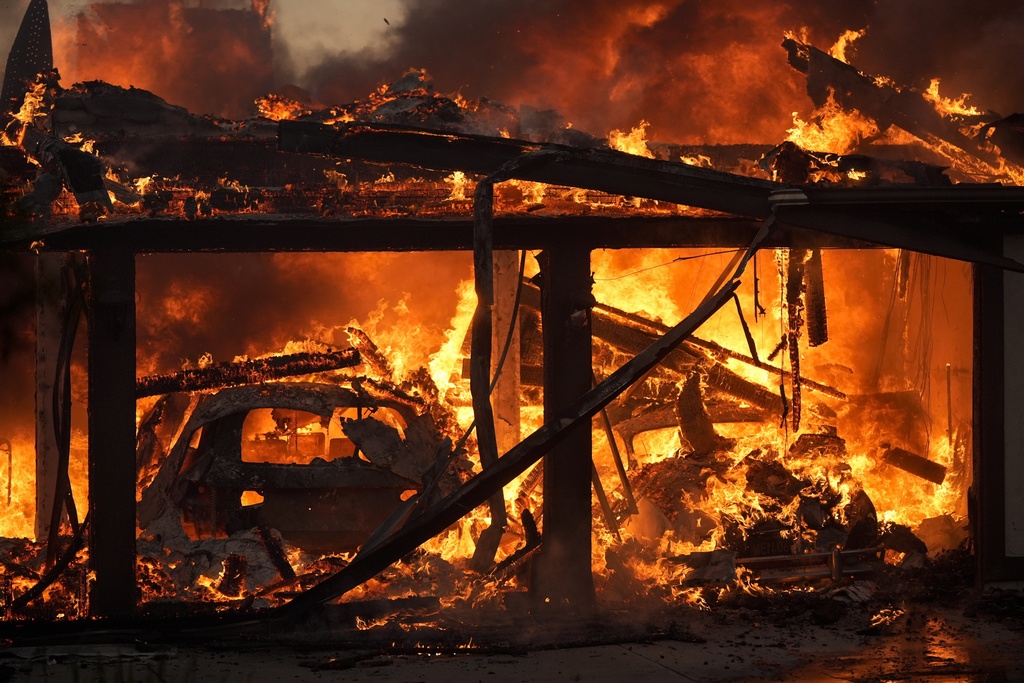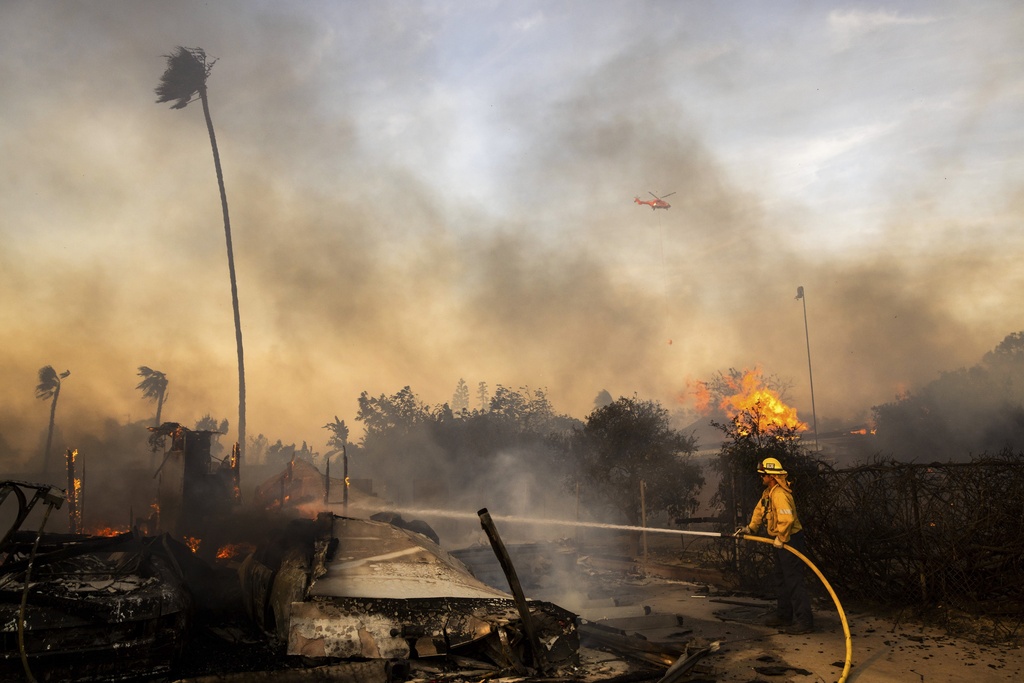Firefighters Progress Against Southern California’s Mountain Fire \ Newslooks \ Washington DC \ Mary Sidiqi \ Evening Edition \ Firefighters in Southern California are gaining control over the destructive Mountain Fire, which has devastated Ventura County, destroying more than 130 structures. Favorable weather conditions over the weekend have supported containment efforts, now at 17%. The blaze initially spread rapidly, forcing thousands to evacuate and threatening thousands of structures, while future wind forecasts pose potential challenges.

Firefighters Gain Ground on Mountain Fire as Weather Improves: Quick Looks
- Extent of Fire: The Mountain Fire spans 32 square miles (83 square kilometers) and is currently 17% contained.
- Destruction and Risk: Over 130 structures have been destroyed, with approximately 3,500 more still under threat in suburban and rural areas near Camarillo.
- Evacuation and Community Impact: Thousands of residents were evacuated as the fire spread midweek, heightening community anxiety.
- Favorable Conditions: Calmer weekend winds of 5-10 mph (8-16 kph) have aided firefighters’ efforts to establish containment lines.
- Weather Expert Insight: Meteorologist Ryan Kittell noted that while current conditions are beneficial for containment, smoke remains a concern for air quality.
- Future Weather Forecasts: Winds are expected to return Tuesday, but they will likely be milder compared to the gusts of up to 61 mph (98 kph) that fueled the fire’s rapid spread earlier in the week.
- Declaration of Emergency: Governor Gavin Newsom declared a state of emergency in Ventura County to expedite resources and assistance.
- Historical Significance: The region, located northwest of Los Angeles, has a history of severe wildfires, often driven by Santa Ana winds that create rapid fire spread.
Deep Look
Thousands of residents were forced to evacuate as the flames approached suburban neighborhoods, ranches, and agricultural areas around Camarillo. The fire’s swift and erratic growth left many residents scrambling to leave their homes, highlighting the sudden nature of wildfires in this fire-prone region.
Initial reports indicate that the fire’s intensity was fueled by powerful northeast winds peaking at 61 mph (98 kph), which created dangerous and fast-moving conditions. Red flag warnings, signaling heightened fire risk, were in effect until Thursday when winds began to subside. The decrease in wind speed over the weekend, dropping to a manageable 5-10 mph (8-16 kph), has given firefighters a much-needed opportunity to strengthen containment lines and protect vulnerable areas. Meteorologist Ryan Kittell of the National Weather Service in Oxnard commented that while the weather was favorable for firefighting, smoke hanging over the region continued to impact air quality, posing health concerns for residents.
Governor Gavin Newsom’s declaration of a state of emergency in Ventura County underscores the seriousness of the situation. This measure facilitates the allocation of state resources, expediting relief efforts for affected communities and supporting the extensive firefighting response. The move reflects California’s commitment to proactive crisis management, drawing from the state’s extensive history of managing wildfire emergencies.
The region northwest of Los Angeles, known for its mountainous terrain and dense brush, has been the site of some of California’s most destructive fires in past years. The combination of dry vegetation, steep landscapes, and seasonal winds like the Santa Anas can create perfect storm conditions for fast-spreading wildfires. The Mountain Fire is a stark reminder of how quickly fires can ignite and expand, especially in areas with a history of intense fire activity.
While the red flag warnings have expired, signaling a short-term reprieve, officials and residents are bracing for the potential return of stronger winds. The winds are anticipated to pick up by Tuesday, although current models suggest they will not match last week’s ferocious speeds. Nonetheless, fire crews are preparing for any shift in conditions, emphasizing the importance of maintaining a vigilant stance and proactive fire defense strategies.
The National Weather Service and local authorities continue to monitor conditions closely, urging residents to stay informed and prepared as the situation develops. The experience of the Mountain Fire highlights the crucial balance between immediate firefighting actions and long-term community resilience planning, emphasizing both quick responses and strategies for recovery and future prevention.
California’s firefighting teams, recognized for their expertise and ability to adapt to rapidly changing conditions, remain on the front lines, working to contain the Mountain Fire and mitigate further damage. Their efforts are supported by local, state, and federal agencies, showcasing a comprehensive approach to crisis management aimed at protecting both lives and property. The region’s experience with destructive fires serves as a somber reminder of the ongoing challenges posed by climate change and the importance of community readiness in high-risk areas.
Firefighters Progress Firefighters Progress







